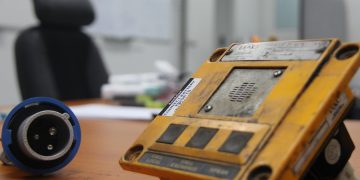Not known Facts About Roar Solutions
Not known Facts About Roar Solutions
Blog Article
Rumored Buzz on Roar Solutions
Table of ContentsThe Definitive Guide for Roar SolutionsFascination About Roar SolutionsThe Facts About Roar Solutions Uncovered
In order to shield installations from a potential surge a technique of evaluating and classifying a possibly unsafe location is required. The function of this is to guarantee the correct option and setup of equipment to eventually prevent an explosion and to guarantee safety of life.
(https://leetcode.com/u/roarsolutions/)
No equipment should be installed where the surface temperature level of the tools is more than the ignition temperature level of the offered danger. Below are some usual dust dangerous and their minimum ignition temperature. Coal Dirt 380C 225C Polythene 420C (melts) Methyl Cellulose 420C 320C Starch 460C 435C Flour 490C 340C Sugar 490C 460C Grain Dust 510C 300C Phenolic Resin 530C > 450C Aluminium 590C > 450C PVC 700C > 450C Soot 810C 570C The probability of the danger being present in a focus high sufficient to cause an ignition will certainly differ from location to location.
In order to categorize this danger an installment is divided right into areas of threat depending upon the amount of time the dangerous is present. These locations are referred to as Areas. For gases and vapours and dirts and fibres there are 3 zones. Zone 0 Area 20 A dangerous ambience is extremely likely to be existing and might be present for extended periods of time (> 1000 hours per year) or even continuously Area 1 Area 21 A hazardous environment is possible but not likely to be present for extended periods of time (> 10 450 C [842 F] A category of T6 implies the minimum ignition temperature level is > 85 C [185 F] Harmful location electrical equipment maybe designed for use in greater ambient temperatures. This would certainly showed on the ranking plate e.g. EExe II C T3 Ta + 60C( This indicates at 60C ambient T3 will certainly not be gone beyond) T1 T1, T2, T3, T4, T5, T6 T2 T2, T3, T4, T5, T6 T3 T3, T4, T5, T6 T4 T4, T5, T6 T5 T5, T6 T6 T6 A T Class rating of T1 indicates the maximum surface temperature generated by the tool at 40 C is 450 C. Assuming the associated T Class and Temperature ranking for the devices are proper for the location, you can constantly utilize an instrument with a much more stringent Department rating than needed for the area. There isn't a clear response to this question sadly. It actually does depend on the kind of tools and what repair work need to be brought out. Equipment with specific test treatments that can't be done in the field in order to achieve/maintain 3rd party score. Should return to the manufacturing facility if it is before the devices's service. Field Repair Work By Authorised Personnel: Challenging screening may not be called for nevertheless particular procedures might need to be complied with in order for the equipment to maintain its 3rd party rating. Authorised workers must be used to execute the work properly Repair work have to be a like for like substitute. New component have to be thought about as a straight substitute calling for no special testing of the equipment after the repair service is full. Each tool with an unsafe rating should be assessed individually. These are outlined at a high degree below, however, for even more comprehensive info, please refer straight to the guidelines.
Not known Incorrect Statements About Roar Solutions
The tools register is a detailed database of equipment documents that consists of a minimum set of areas to recognize each item's area, technical parameters, Ex classification, age, and environmental data. The ratio of Thorough to Close evaluations will be identified by the Equipment Risk, which is assessed based on ignition danger (the possibility of a source of ignition versus the possibility of a flammable ambience )and the unsafe area category
( Zone 0, 1, or 2). Executing a durable Risk-Based Assessment( RBI )approach is critical for making certain compliance and safety in managing Electrical Tools in Hazardous Areas( EEHA).
Top Guidelines Of Roar Solutions

In regards to explosive risk, a harmful area is an atmosphere in which an eruptive environment exists (or may be anticipated to be existing) in quantities that require unique safety measures for the building and construction, installment and usage of equipment. high voltage courses. In this write-up we discover the challenges encountered in the office, the threat control measures, and the needed expertises to function safely
These substances can, in specific conditions, create explosive environments and these can have major and unfortunate effects. Most of us are familiar with the fire triangle eliminate any type of one of the 3 aspects and the fire can not take place, but what does this mean in the context of dangerous locations?
In a lot of instances, we can do little regarding the degrees of oxygen in the air, however we can have significant influence on sources of ignition, for instance electrical tools. Hazardous locations are recorded on the harmful location category illustration and are determined on-site by the triangular "EX" indicator. Here, among other crucial info, zones are divided right into three kinds depending upon the threat, the likelihood and duration that an explosive atmosphere will exist; Zone 0 or 20 is regarded one of the most harmful and Zone 2 or 22 is deemed the least.
Report this page